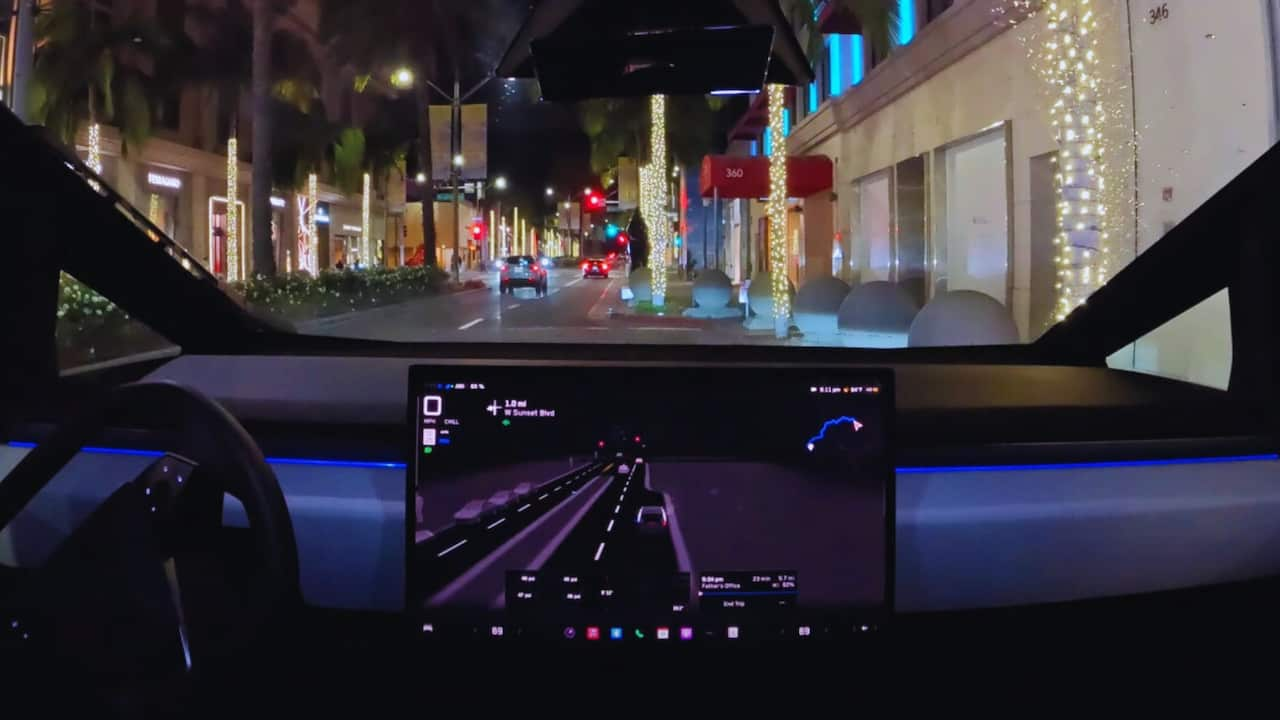Tesla’s Self-Driving Dreams: A Roadblock Ahead?
As a tech reporter, I’ve seen my fair share of big promises from Silicon Valley. But Tesla’s recent announcements about “unsupervised” Full Self-Driving (FSD) and robotaxis have me raising an eyebrow. Let’s break down what’s happening and why it might not be smooth sailing for the electric car giant.
The Big News
Last week, Tesla CEO Elon Musk dropped some bombshells:
- Tesla plans to release an “unsupervised” version of FSD in Texas and California by 2025.
- The company aims to start making robotaxis (cars without steering wheels or pedals) by 2026 or 2027.
Sounds exciting, right? But here’s the catch: these plans could hit some serious speed bumps when it comes to following the rules.
What’s the Deal with “Unsupervised” FSD?
First, let’s clear up some jargon. FSD stands for “Full Self-Driving,” but it’s not really fully self-driving… yet. Right now, it’s more like a super-smart cruise control that can do some tricky driving tasks, but a human still needs to pay attention and take over if needed.
So, what does “unsupervised” mean? It could be one of two things:
- A totally driverless system (what experts call “Level 4”)
- There is a system known as “Level 3” that allows you to take your hands off the wheel and your eyes off the road, but you may occasionally need to jump in.
The Rule Book: It’s Complicated
Here’s where things get tricky. Different places have different rules for self-driving cars. Let’s look at the two states Tesla is targeting:
- Texas: The Wild West of Self-Driving?
Texas has a relatively relaxed attitude towards driving cars. Companies can test them out as long as the car:
- Follows traffic laws
- It features a “black box” that records what happens.
- Is registered and insured
But even Texas might tighten things up next year. They’re talking about making companies tell the state when they take human drivers out of the picture.
- California: Not So Fast
California’s a whole different ballgame. They’ve got a bunch of different permits for self-driving cars:
- Testing with a safety driver
- Testing without a driver
- Actually using the cars for business (but not carrying passengers)
Tesla’s only got the first permit right now. If they wish to transition to autonomous driving, they will have to overcome additional obstacles.
And what if Tesla wants to use these cars for ride-hailing? That’s a whole other set of permits they’d need to get.
The Robotaxi Challenge
Now, let’s talk about those steering wheel-less robotaxes Tesla wants to make. There’s a big roadblock: federal safety rules.
Right now, cars are required to have things like steering wheels and pedals. To make a car without them, Tesla needs special permission from the government. And guess what? They haven’t even asked for it yet.
Only one company (Nuro) has gotten this kind of permission, and that was for small delivery vehicles, not passenger cars.
The Big Picture
Tesla’s got some ambitious plans, but they’re facing a maze of rules and regulations. Here are the key takeaways:
- “Unsupervised” FSD might be easier to roll out in Texas than in California.
- Getting approval for true robotaxis could take a long time.
- Tesla’s timeline might be overly optimistic (it wouldn’t be the first time).
Investors seem worried too. After Tesla’s big announcement, their stock took a hit, dropping nearly 10%.
What’s Next?
We will closely monitor Tesla’s approach to navigating these challenges. Will they find a way to work within the rules? Will the rules change to accommodate new technology? Or will Tesla’s aspirations of self-driving cars encounter obstacles?
Undoubtedly, the journey towards fully autonomous vehicles will be more extensive and challenging than initially anticipated. Buckle up, folks—it’s going to be an interesting ride!
Table of Contents
